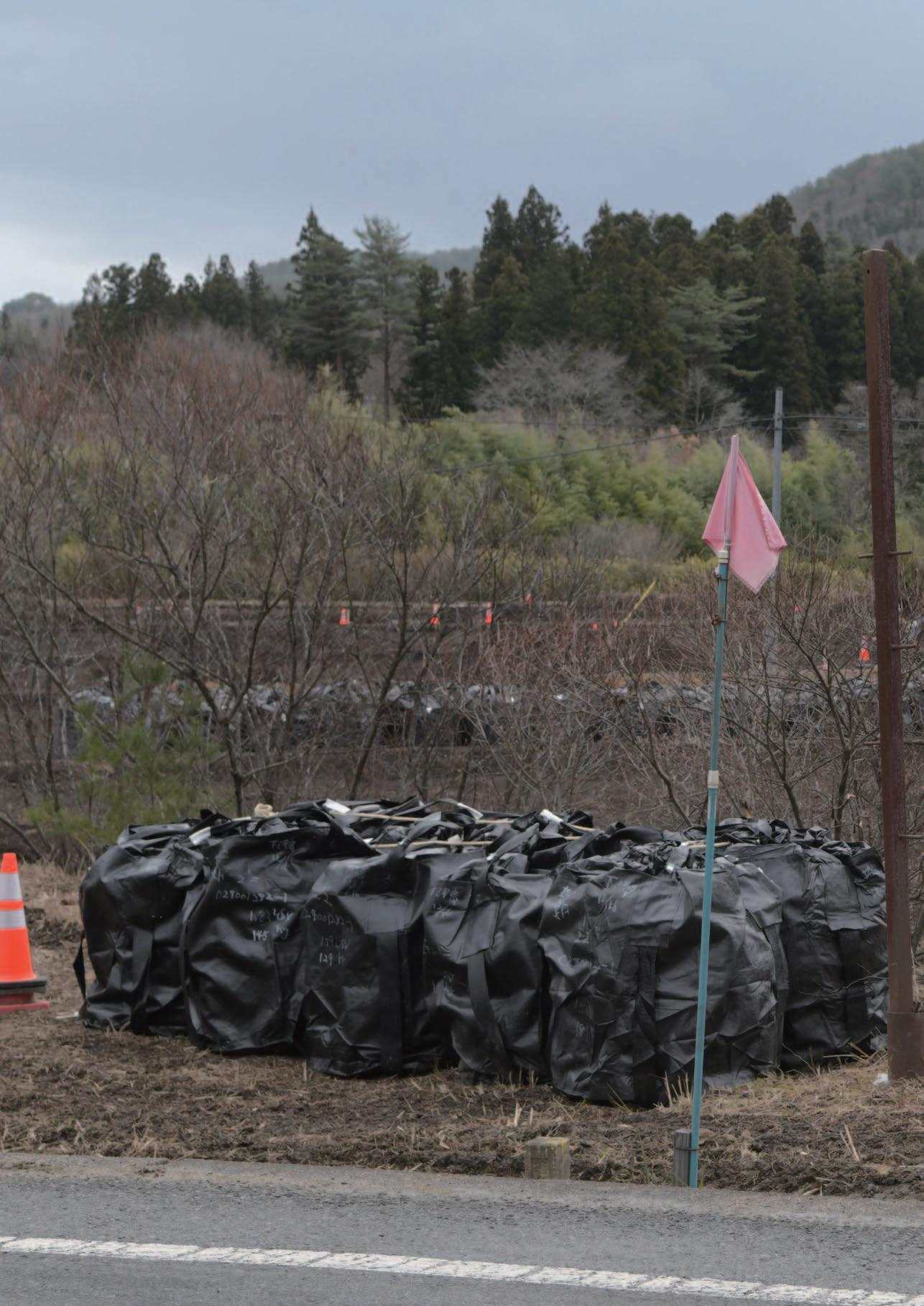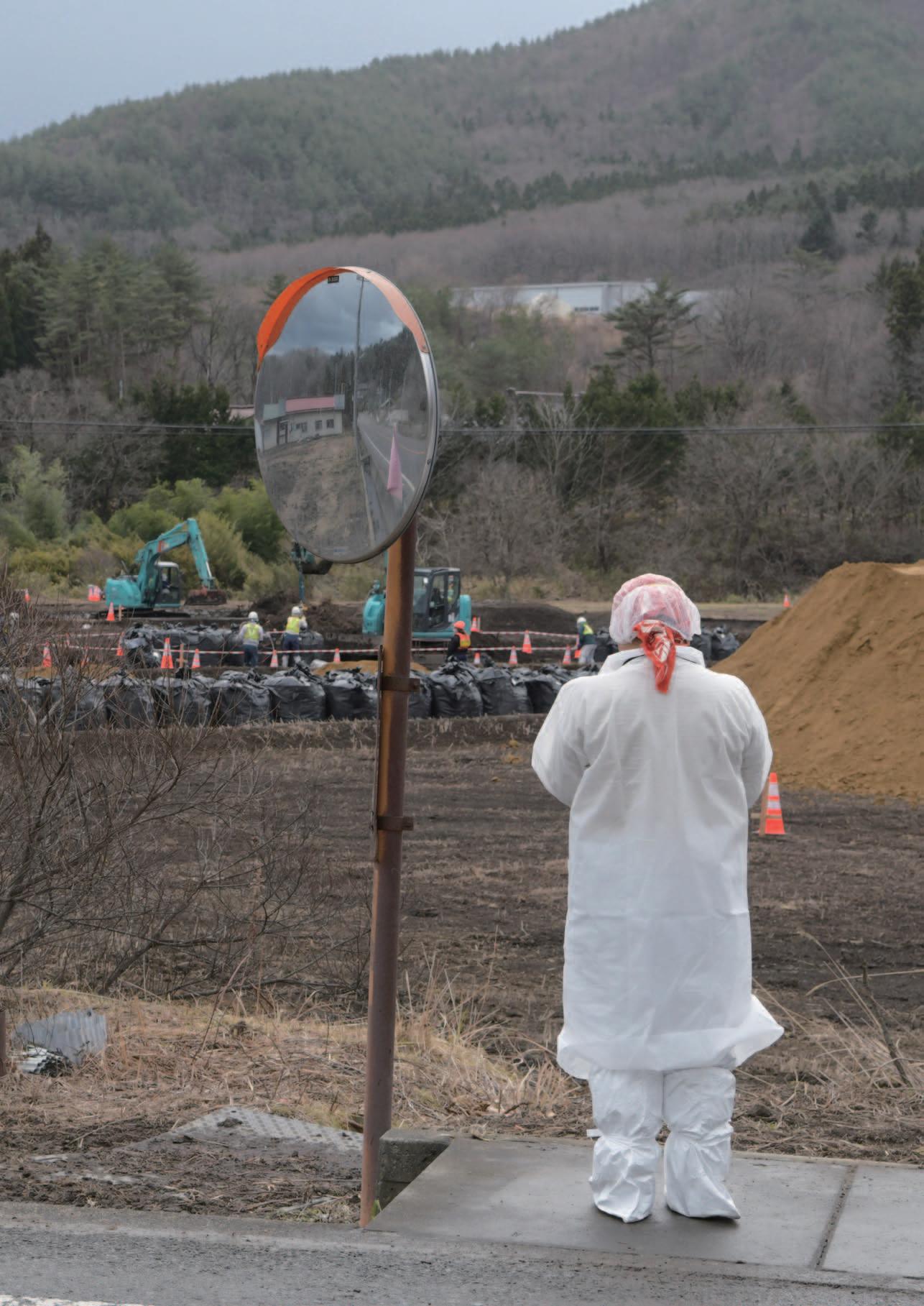
4 minute read
8. Conclusion and recommendations
8
Conclusion and recommendations
The results of the 2019 Greenpeace Japan’s radiation survey highlight the complexity of the radiological conditions in Fukushima prefecture. There are strong indications that the very heavy rainfall generated by 2019’s Typhoon Hagibis and Typhoon 21 (Bualoi) had a major impact on the mobilization of radioactive cesium. The mountainous forests of Fukushima prefecture remain an enormous stock of radioactivity and evidence from the latest survey indicates that this radioactivity was significantly disturbed and mobilized in October 2019.
As we have measured certain areas repeatedly over a number of years, we observed in our 2019 surveys that radiation levels remained stable in certain areas whilst in others there were significant variations, including reductions. These reductions cannot be explained by radioactive decay. At the same time, Greenpeace identified areas of high concentrations, including hotspots. There was clear visual evidence of recontamination caused by water remobilizing radioactivity from the contaminated forests. This was witnessed in both the closed area of the Namie exclusion zone and the open area of Namie Town. As in 2018, average and maximum radiation levels in the lifted evacuation areas (i.e. areas determined by the Japanese government to be safe for return) of Namie and Iitate remain too high for normal life to be considered possible without increased health risks to returning citizens.
The Japanese government continues to defy United Nations human rights specialists who have challenged the policy of lifting evacuation orders, exposing citizens, in particular women, children, and workers, to unsafe radiation levels. The latest Greenpeace Japan survey results highlight the scale of the ongoing nuclear crisis in the most contaminated areas of Fukushima, and why the United Nations human rights experts are fully justified in expressing their urgent concerns.
Greenpeace’s discovery of high levels of radiation and multiple hotspots, in both Fukushima City and the J-Village sports complex, directly challenges the Japanese government’s propaganda narrative preceding the 2020 Summer Olympic Games. The complexity of the radiological situation is underscored by measurements in Fukushima City and around J-Village.
The risk factors for these elevated radiation levels remain unknown, and particularly relate to long term residents. At the same time, the presence of Cesiumrich MicroParticles (CsMPs) across Fukushima prefecture (which are respirable and therefore hold
the potential to deliver concentrated doses) exposes Japanese government’s assurances that there are no radiation risks to be mere propaganda. The fact that every hotspot measured by Greenpeace in Fukushima City would classify it as a dangerous good or Radioactive Material Class 7 under IAEA regulations shows that the radiation situation in Fukushima is very far from normal.
The complex conditions in Fukushima resulting from the 2011 triple reactor meltdown cannot be ignored to suit the propaganda objectives of the Japanese government. Neither can this complexity be explained in simplistic slogans – neither “all is under control” nor “all of Fukushima is radioactive and dangerous” reflect the reality. Such an approach is an enormous disservice to the people of Fukushima. The complexity of the radiation situation in Fukushima needs to be studied, explained, and understood by the wider Japanese society and the international community. The attention Japan, including Fukushima Prefecture, will receive in 2020 as a result of the Olympic games is an opportunity for attaining a deeper understanding of the consequences of the Fukushima Daiichi disaster.
Recommendations to the Japanese Government and Fukushima Prefecture
Suspend the current return policy which ignores Fukushima citizens and ignores science-based analysis, including potential lifetime exposure risks; Immediately clarify its long-term decontamination target of 0.23 μSv/h, equal to 1 mSv/y exposure based on the government’s calculation, including setting a date for when 0.23 μSv/h is to be attained, and halt any plans to revise the target level to a higher limit; Urgently assess the risks posed by radioactive hotspots, including the presence of cesiumrich microparticles, including the long-term consequences for public health; Abandon plans to lift evacuation orders in the six municipalities of Futaba, Okuma, Namie, Tomioka, Iitate and Katsurao, including the Namie districts of Tsushima, Murohara, Suenomori and Obori; In the interests of worker protection, suspend current decontamination programs in the “Difficult to Return” zones; Establish a fully transparent process to reflect and consider residents’ opinions on evacuation policy, including opening a council of citizens including all evacuees; Provide full compensation and financial support to evacuees, and take measures to reduce radiation exposure based on science and the precautionary principle to protect public health and allow citizens to decide whether to return or relocate free from duress and financial coercion; and, Respond in full to the offer of dialogue and guidance from UN Special Rapporteurs, including accepting outstanding requests for Special Rapporteurs to visit Japan.








